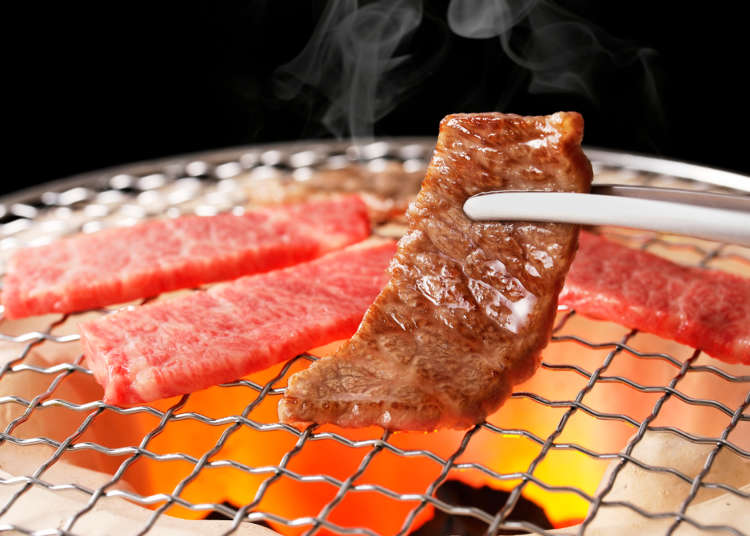
What’s the Difference Between "Wagyu" and "Japanese Domestic Beef"? We Asked a Popular Chef About the Surprising Differences in Ingredients
- Written by: Naho Jishikyu
Many of the foods we casually eat have different names even though they might look very similar. This time, we're investigating the differences in ingredients. We spoke with H. Saki, a chef at a popular restaurant in Tokyo with extensive experience in cooking a wide variety of ingredients, to learn more.
The Difference Between "Wagyu" and "Japanese Domestic Beef"

When buying beef at the supermarket or butcher, you might see labels like "Wagyu" and "Domestic Beef." You might think they both refer to Japanese beef and are thus the same. However, that's not the case.
"Wagyu refers specifically to four breeds: Japanese Black, Japanese Brown, Japanese Shorthorn, and Japanese Polled, as well as their crossbreeds. On the other hand, Domestic Beef can be from any breed, including foreign breeds, as long as the cattle were raised in Japan for the majority of their lives and processed domestically for consumption."
In other words, "Wagyu" refers to the breed, not the place of origin. Sometimes you'll see terms like "Black Beef" or "Black Hair Beef," but if they don't include the character "和" (meaning "Japanese"), they are not considered Wagyu. So, it's important to check the labels carefully.
The Difference Between "Bacon" and "Pancetta"

"Pancetta" is often seen on menus at Italian restaurants or in pasta recipes. At first glance, it might look similar to "bacon," but there are differences in the cut of meat used and the preparation process.
"Pancetta is made from the pork belly ('pancia' in Italian) that is cured with salt and spices. Bacon, on the other hand, is cured with salt and spices and then smoked."
Indeed, the smoking process gives bacon a distinctive smoky flavor. However, in terms of cooking uses, there isn't much difference between the two.
"Bacon is often cooked until crispy and used as a salad topping or in dishes like Amatriciana pasta. Pancetta can be used similarly but is also great in carbonara pasta or cooked with potatoes in an 'ajillo' (garlic and olive oil) dish."
The Difference Between "Wieners" and "Sausages"

"Wiener" is a common item on the dining table, similar to bacon and pancetta. It's often referred to by the general term "sausage." So, what sets them apart?
"Sausage is a general term for a food made by stuffing minced pork, chicken, spices, and other ingredients into the intestines of cows, pigs, or sheep. Wiener refers specifically to sausage made by stuffing minced pork or chicken into sheep intestines. It is also known as 'Vienna sausage.' Sausages stuffed into cow intestines are called 'bologna sausage,' while those stuffed into pig intestines are known as 'frankfurter sausage.'"
In other words, "wiener" is a type of sausage. Nowadays, artificial casings are often used, and the difference in names can also depend on the thickness of the product.
The Difference Between "Piman" and "Paprika"

There are two different words for types of peppers in Japanese, piman (Japanese green peppers) and paprika (bell peppers) are taken from different languages. Piman is a short version of the Spanish pimiento, while paprika (not to be confused with the spice) is actually the German word for the vegetable.
"Piman" and "Paprika" are often thought to be the same because they look quite similar. One might think that the green ones are "Piman" and the yellow or red ones are "Paprika," but there are also colored Piman, so the distinction isn't based on color alone.
Actually, both Piman and Paprika belong to the same species of the nightshade family and are classified as Capsicum annuum. There isn't a clear botanical distinction between the two; they are generally differentiated by the thickness of the flesh, sweetness, and size.
"Piman and Paprika come in green, yellow, orange, and red. The different colors result from the timing of harvest. Nutritionally, the colors also vary. Green Piman has a bitter taste, making it better suited for cooking with other ingredients, such as stuffed peppers or stir-fries.
Yellow, orange, and red Paprika are sweeter and can be eaten raw. Yellow Paprika is the sweetest, making it ideal for salads and other dishes where it is eaten raw."
The Difference Between "White Asparagus" and "Green Asparagus"

Asparagus is at its most delicious in early spring. In supermarkets, you'll find both green "Green Asparagus" and white "White Asparagus." The difference between them isn't due to different varieties but rather their cultivation methods.
"Green Asparagus is grown by allowing the shoots to emerge from the soil and be exposed to sunlight, which produces chlorophyll, giving it its green color. In contrast, White Asparagus is grown by covering the emerging shoots with soil, preventing sunlight exposure, so it remains white. This results in a tender texture and a sweeter taste."
The color and taste differences arise from whether or not the asparagus is exposed to sunlight. Green Asparagus has a slightly more robust flavor compared to the milder White Asparagus, but it also has higher nutritional value. Originally, both come from the same asparagus variety. It's best to choose based on your taste preference.
The Difference Between "Kaiware Daikon" and "Daikon"

There are many vegetables that look similar but are quite different. "Kaiware Daikon" and "Daikon" are a perfect example. Although they look entirely different, they share the same name, making the differences intriguing.
"Kaiware Daikon refers to the sprouts that emerge from daikon seeds. They are a type of 'sprout.' Both Kaiware Daikon and Daikon come from the same seeds, but their cultivation methods differ. Kaiware Daikon is grown hydroponically and harvested while still in the seedling stage. In contrast, Daikon is grown in soil and harvested when mature."
Kaiware Daikon is created when daikon seeds sprout and are exposed to sunlight, turning green. The name "Kaiware" comes from the resemblance of the sprouted leaves to a split shellfish.
"Kaiware Daikon is usually eaten raw, often used as a garnish for salads or carpaccio. Daikon, when eaten raw, can be thinly sliced for salads or served with bagna cauda. It can also be cooked in broth for pot-au-feu, or added to dishes like oden, where its sweetness and texture are enhanced by simmering."
Naho has been working as an editor and writer for over 17 years. After editing various materials such as manga, novels, and magazines, she became a freelancer. She is skilled in reporting and writing about food, sightseeing, and drama reviews while also providing web strategy consulting for food and beverage companies. As a result, she is always up-to-date on new products and trends in Japanese cuisine and conveys them in an understandable manner to people of all ages and nationalities through LIVE JAPAN.
*Prices and options mentioned are subject to change.
*Unless stated otherwise, all prices include tax.
Popular Tours & Activitiess
Recommended places for you
-

The Ultimate Guide to Mitsui Outlet Parks in Japan (2025 Edition) - Popular Tax-Free Malls & Coupon Info for Travelers
-
Ad

Unraveling the History of the Hidden Christians from Goto City, Nagasaki Prefecture, located in Kyushu
by: Yohei Kato
-
Ad

Walk in the Footsteps of Believers: A 4-Day Pilgrimage Across Goto City
by: Yohei Kato
-

A Don Quijote Like No Other: Step Inside the All-New Tourist-Friendly Store at Shinjuku Tonanguchi Bekkan
by: Chehui Peh
-
Ad

Get Your Perfect Custom Suit at GINZA Global Style PREMIUM Ginza Honten: Choose from 5,000 Fabrics, Starting at 26,400 Yen (incl. tax)!
-
Ad

Okinawa Travel Troubles? Guide to the MCC Hotline for Illness and Weather Emergencies
Inspiration for Accommodations
-

Enjoy Mt. Fuji from the Comfort of Your Room! Recommended Ryokan with Mt. Fuji View
-

Stay Near the Cherry Blossoms! Hotels for Cherry Blossom Viewing in Tokyo
-

Family-Friendly Hotels with Free Shuttle to Disneyland: Convenient Access for a Magical Stay
-

Top Ranked Hakone Hotels with Mt. Fuji View: Enjoy Stunning Scenery from Your Private Space
-

Convenient Tokyo Hotels with Airport Shuttle: Ideal for Families and Heavy Luggage
-

Stunning Tokyo Tower View Hotels: Enjoy Spectacular Scenery from Your Private Space
-

Convenient Asakusa Hotels with Kitchens: Ideal for Extended Family Visits
-

Experience Luxury: Hakone's 10 Best Five-Star Accommodations
-

Enjoy Mt. Fuji Autumn Leaves! Top Hotels Near the Popular Autumn Leaves Corridor
-

Experience Hakone Fall Foliage from Your Room with Stunning Views
-

How Japan's Sushi Trains Are Coping with COVID: Sushiro's Latest Safety Measures and Services
by: Miyu Shimada
-

Atami 1-Day Itinerary: Exploring Japan's Castle & Hot Springs Resort Town Near Tokyo!
-

Three of the Best Places to See Mt. Fuji From Tokyo
-

That's One Way to Take Your Favorite Dish Home! Sushi Nails in Shibuya
-

JR Edition: Visit all of Tokyo in one Day with the Tokyo Metropolitan District Pass!
-

The Perfect Memento: Our Favorite Souvenir Shops in and Around Tokyo!
- #best ramen tokyo
- #what to buy in ameyoko
- #what to bring to japan
- #new years in tokyo
- #best izakaya shinjuku
- #things to do tokyo
- #japanese nail trends
- #what to do in odaiba
- #onsen tattoo friendly tokyo
- #daiso
- #best sushi ginza
- #japanese convenience store snacks
- #best yakiniku shibuya
- #japanese fashion culture
- #best japanese soft drinks



















